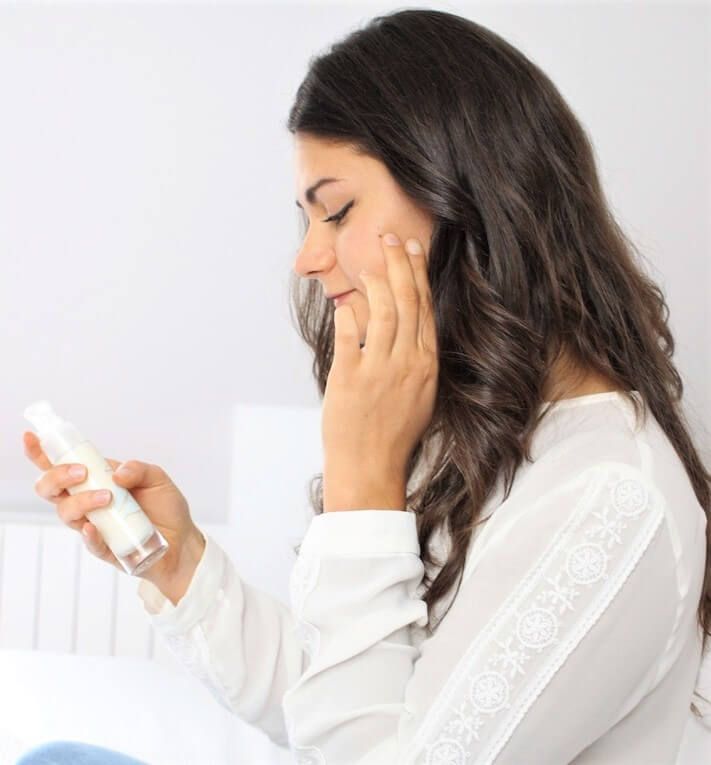Reading the INCI list of your ingredients is sometimes a real headache: complicated names, a list that is too long... Drowned in too much information, how to find your way around and how to know which products are essential and which are otherwise harmful? BeautyMix answers your questions and wants to prove to you that a good product does not necessarily require a lot of ingredients... Quality and simplicity are our watchwords!
The INCI list, what is it and how to decipher it?
First of all, what do these initials mean? International Nomenclature of Cosmetic Ingredients.
In other words, an international list that you will find on the packaging of your products, anywhere in Europe! The display of this list on your packaging is MANDATORY in Europe and has been since 1998. A very recent reform therefore!
You may panic when you see this one mainly written in Latin and English but this is due to the fact that, as said before, this list is international.
Ingredients listed in Latin refer to plant extracts . For example, the term "Simmondsia Chinensis", the botanical name of Jojoba, is used to refer to the oil produced from it.
The English terms are the molecules and the names usually used. For example, zinc oxide is written "Zinc Oxide".
Concerning the ingredients composing the perfume, they are grouped under the name "Parfum" and are followed by allergens.
For dyes and pigments , they are designated by a Color Index recognizable in the INCI list by the initials Cl, completed by five digits. The code Cl77491 designates for example the iron oxide that we use in our lipstick recipes.
Polluting ingredients can also be identified by their name. If you come across petrochemical products, they will be named "Paraffinum Liquidum" or "Petrolatum".
Silicones also have names ending in -one: demithicone, cyclomethicone. These substances of synthetic origin are not very biodegradable.
Also, beware of derivatives of PEG (PolyEthylene Glycol), emulsifiers produced by chemical reaction from harmful gases.
To recognize components from organic farming, rely on the asterisks placed at the end of the ingredient in question.
The order of the list is also thought to present to you first the ingredients in greater quantity in your product, then in lesser quantity. In other words, your list is presented in descending order. When the ingredients are present at less than 1%, they can be indicated out of order and at the end of the list.
If you have doubts and difficulties in deciphering or understanding the source of an ingredient, we strongly recommend the site of theCosmetics Observatory, which offers very specific answers about each of them. More recently, applications Yuka, QuelCosmetic or Inci Beauty in full expansion, offer to scan your cosmetic products and tell you if the composition is good or on the contrary rather bad.
What is the difference between so-called "conventional" and "natural" products?
Conventional cosmetic products can contain up to 95% of ingredients of synthetic origin . Natural cosmetics must contain at least 95% to 100% plant ingredients from organic farming (Ecocert Cosmos Certified), 95% to 100% of the ingredients are of natural origin (Ecocert Cosmos Natural) and only 5% of synthetic origin among a restricted selection of non-toxic ingredients. In addition to applying the laws of European health authorities like any product, they also apply the restrictions of organic labels. Knowing these quotas, it immediately gives more desire to acquire products with a cleaner composition, better for your skin, and for the environment!
Among the list of undesirable ingredients to avoid, you find in particular:
Silicones, easy to identify, they generally end in -icone or -iloxane (their industrial process is very polluting and they are not biodegradable)
congratulations
Mineral oils, the best known being Mineral Oil, Paraffinum Liquidum...
And the list goes on and on...
Switch to natural products thanks to BeautyMix
Whether as part of a specific routine or only occasionally, we all use cosmetic and hygiene products (lotion, cream, make-up remover, make-up...). Indeed, our skin being permeable, our body absorbs a large quantity of product. It is therefore better to ensure that these do not damage our skin!
Natural products are often very concentrated in plant active ingredients which are very effective, respectful of the skin and the environment.
In other words, they contain NO synthetic ingredients and potential endocrine disruptors. They come from pure products , and generally come from organic crops. This can obviously sometimes justify higher prices, but isn't it better to focus on quality?
At BeautyMix , we offer you to create your homemade cosmetic products usingingredients simple and natural . Our finished products are therefore impeccable in terms of composition and you become an actor in the products that you apply to your skin.
In particular, we offer natural oils such as sweet almond, hazelnut, sesame or even carrot oil. Of the hydrosols floral like rose, witch hazel or orange blossom. Of the texture agent just as natural as beeswax, glycerin and active ingredients which are also natural, such as gel of linen For example.
An opportunity to switch to natural products and to the complete satisfaction of homemade , self-made . In addition, this alternative is economical compared to the acquisition of products alone because you only pay for the raw materials. Preparing your cream only costs you 4€ for example.

Opening consumers' eyes and inviting them to turn to products that respect their skin and the environment is the challenge we have set ourselves.
So what are you waiting for? :)